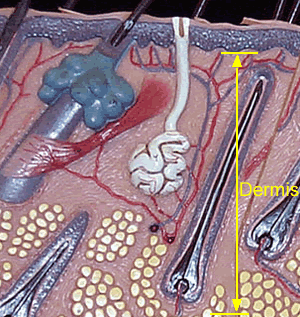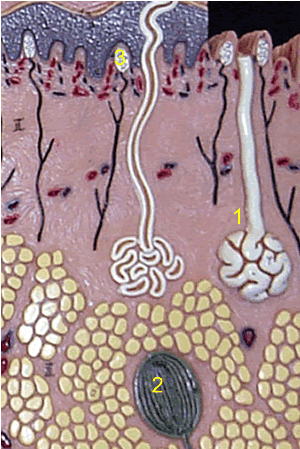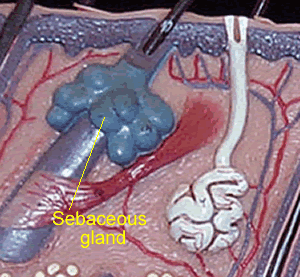Skin -the dermis
Many tiny blood vessels (capillaries) that supply blood to the dermis help regulate heat loss from the body. When the body needs to get rid of some body heat, especially during exercise, the walls of blood vessels (arterioles), supplying blood to the skin, relax and cause the diameter of the blood vessel to increase and so more blood flows through the blood vessel. This causes the skin to appear red.
When body heat needs to be
retained, the opposite happens. The walls of the arteriole constrict
and the diameter of the vessel decreases causing less blood to flow.
Hair follicles produce hair fibers that are involved, although to a
lesser extent in humans, in heat control.

Sweat glands (1) are coiled tubes which are richly supplied with blood vessels and are also responsible for heat loss. Special epithelial cells that line the tubes take up water, salt and some waste products from the surrounding tissue and secrete this mixture into the coiled tubes that eventually empty onto the surface of the skin. Evaporation of water from the surface of the skin cools the body.
Sensory nerve endings are also found in the dermis. Sensory receptors include touch receptors (3), pressure receptors (2), pain, heat and cold. Such receptors give vital information to the brain of the environment in which the person is in. Pain can mean danger while heat may cause severe damage, or even death, unless the brain acts by activating the body's cooling mechanisms.

